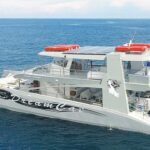The world of classic television holds a special place in the hearts of many. The Tinkerer’s Workshop and Captain Kangaroo stand out among the legendary Tinkerer’s have left an indelible mark on viewers. These shows were iconic not just for their entertainment value but for how they helped shape children’s imaginations during their prime. Among the most memorable features of Captain Kangaroo was the “magic Screen,” a captivating device that brought stories, characters, and adventures to life. But what exactly was the Tinkerer’s Workshop? How did Captain Kangaroo integrate the Magic Screen into its narrative? And why did these shows leave such a lasting legacy?
This blog post will dive deep into these fascinating pieces of TV history, exploring the origins, significance, and lasting impact of The TTinkerer’s Workshop, Captain Kangaroo, and the iconic Magic Screen. Plus, we’ll answer the five most frequently asked questions about these beloved shows.

What Was the TTinkerer’sWorkshop?
The TTinkerer’sWorkshop, featured on Captain Kangaroo, was a segment that sparked creativity and encouraged curiosity. The workshop was designed as a space where children could learn about the world around them engagingly and interactively. It was more than just a set on a television show; it was a physical representation of imagination and exploration.
Host Bob Keeshan (Captain Kangaroo) was at the helm, guiding young viewers through various projects, experiments, and crafts. In the TTinkerer’sWorkshop, children saw how everyday materials could be transformed into something new, opening their eyes to the wonders of science and creativity. It was a precursor to the do-it-yourself culture that would later take over children’s programming and DIY shows.
Captain Kangaroo and the Magic Screen
One of Captain KKangaroo’s most magical elements was the Magic Screen. This unique feature allowed Captain Kangaroo to bring various animated characters and objects to life, much to the delight of young viewers. The Magic Screen was a prop that projected characters, objects, and scenes on the screen, giving the illusion that viewers were interacting with Captain Kangaroo in real-time. It was a perfect blend of education and entertainment.
But what made the Magic Screen truly special was how it blended fantasy and reality. It wasn’t just a screen showing cartoons for the children watching; it was a tangible, living part of the show. In a world where screens often feel like passive portals to entertainment, the Magic Screen encouraged active engagement. Viewers were invited to use their imagination and become a part of the storytelling.
5 Frequently Asked Questions (FAQs)
Here are the five most frequently asked questions related to the TTinkerer’sWorkshop, Captain Kangaroo, and the Magic Screen:
What was the TTinkerer’sWorkshop on Captain Kangaroo?
The Tinkerer’s Workshop was a segment on Captain Kangaroo in which the host, Captain Kangaroo (Bob Keeshan), guided children through simple, fun projects. The workshop encouraged creative thinking and problem-solving skills, often using materials easily accessible to children. The aim was to spark curiosity about the world and teach kids how to experiment with everyday items to make something new and exciting.
What made Captain Kangaroo such an iconic child?
Captain Kangaroo became an iconic children’s show children’s show because it combined entertainment with education. Unlike many children’s children’s shows, it focused on kindness, imagination, and understanding. The show’s gentle pacing, lovable characters like Mr. Green Jeans and Bunny Rabbit, and interactive segments like theTinkerer’s WorkshopTinkerer’s Workshop made it an instant favorite. It wasn’t just about keeping kids entertained, instilling positive values, and helping them learn.
for more info
How did the Magic Screen on Captain Kangaroo work?
The Magic Screen was a crucial part of Captain Kangaroo. It was a prop that allowed Captain Kangaroo to interact with animated characters and objects. It wasn’t a digital screen like today’s technology but a creative device that combined live-action with animation, often drawing children into stories and games. Though the exact mechanics were never fully revealed, a projection screen or a simple effect likely created the illusion of interaction.
Why is Captain Kangaroo considered a pioneer in children’s television?
Captain Kangaroo is often considered a pioneer because of its educational approach to children. It was one of the first shows to combine fun with meaningful lessons about kindness, curiosity, and learning. The show’s format, including segments like the Tinkerer’s Workshop, emphasized the importance of creativity and engagement. The show also addressed real-world topics in a way that was accessible and engaging for young viewers.
What impact did Captain Kangaroo and the Magic Screen have on children’s programming?
The legacy of Captain Kangaroo and the Magic Screen is evident in many of today’s children’s programs. The show’s interactive nature inspired future programming to blend education with entertainment. The Magic Screen concept also paved the way for other shows that innovatively integrated animation with live-action. Moreover, Captain Kangaroo’s emphasis on kindness, learning, and creativity set the standard for children’s television.
Conclusion
The TTinkerer’sWorkshop, Captain Kangaroo, and the Magic Screen represent a time in children’s television when creativity, imagination, and education were at the forefront. These elements blended seamlessly, making Captain Kangaroo an iconic program that has had a lasting impact on television and its viewers. While the Magic Screen enchanted audiences, the TTinkerer’sWorkshop inspired them to think, create, and explore the world around them. Today, we continue to see the influence of these pioneering shows in modern educational programming, proving that good ideas—especially those designed to spark creativity—never go out of style.



